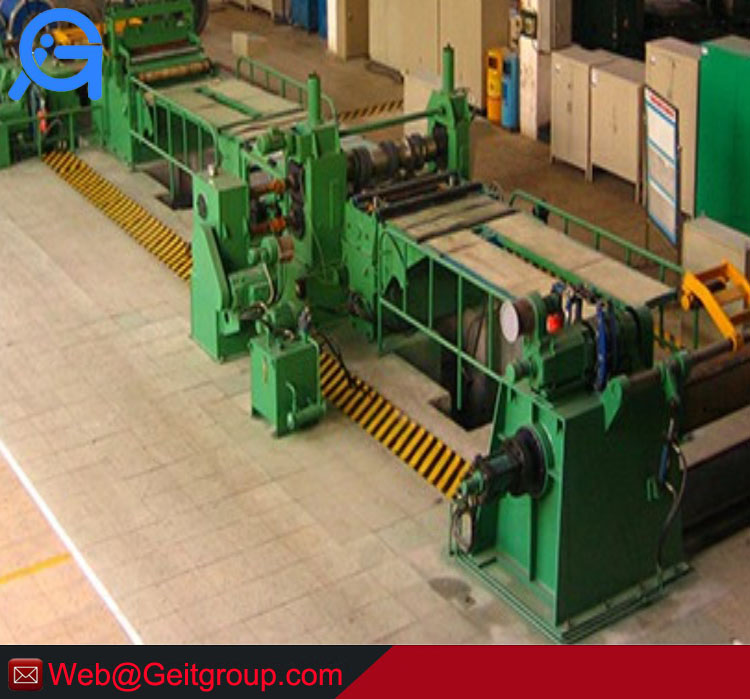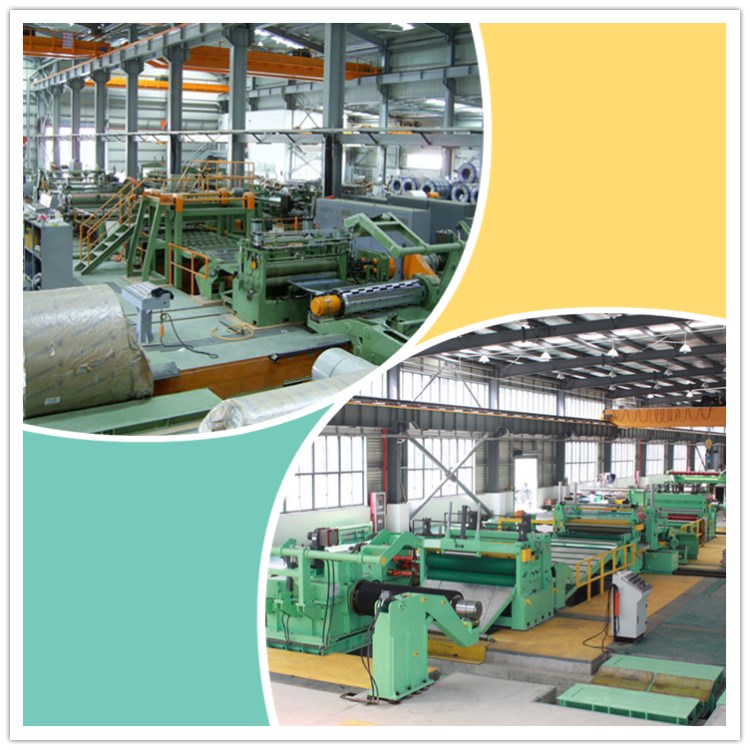Stainless steel coil slitting production line
GEIT stainless steel slitting line is used for SS uncoiling, slitting cut and rolling. It consists of feeding trolley, assisting support, decoiler, pincher, straightener, slitting cutter, edging machine, tensional machine, recoiler machine, and downloading equipment, hydraulic system and so on. The whole line is controlled by PLC with computer display. We mainly apply computer-control system of brands Mitsubishi, Yaskawa, Siemens, Baumueller, Delta, and Schneider. This line can help to improve efficiency, lower cost and ensure quality. KJS has won wide market with its high performance and low price. The thickness of material can be from 0.15MM to 16MM, width from 600MM to 2500MM, quantity from 6 to 30 pieces, highest precision ±0.05MM and speed 200M/min.
Technical data of stainless steel slitting lines:
|
Model |
Stainless slitting line GTS120 |
|
coil weight(ton) |
3,5,10,15,20, |
|
coil width(mm) |
150-2000 |
|
coil thickness(mm) |
0.2-3 |
|
Number of slitting |
6-30 |
|
line speed(m/min) |
0-120 |
|
Accuracy(mm) |
0.05 |

Efficient and high-quality slitting of most stainless steels requires knowledge of the differences between carbon and stainless grades. It also demands a complete reassessment of equipment and tooling, as well as many peripheral processing and packaging issues. Although it is clear that carbon steels and stainless steels are different materials, it is not as obvious that some significant changes must be made when slitting stainless grades.
The first big difference between carbon and stainless coil slitting often is noted immediately after the coil is loaded on the slitter-the paper interleaf material in bright-annealed stainless must be taken up as the coil runs.
The slitter must be equipped with an efficient paper take-up reel that doesn't allow the paper to drop off, an unsafe, cumbersome situation. In most cases, without the positive tension provided by the take-up reel, the paper won't drop off and risks getting pulled into the slitter itself.
Of course, polished-finish and bright-annealed stainless coils likely will require paper interleaving or a PVC adhesive plastic coating before slitting, so the slitter should have the ability to apply such surface protection to the material.
The slitter's features, including overall cleanness, arbor size, power limitations, and physical contact areas with the material, all must be reconsidered when slitting stainless steels versus carbon grades. In general, the material properties, surface quality requirements, and higher overall cost of most stainless grades will result in slower slitting speeds, enhanced inspection, and a closer scrutiny of scrap levels. It is suggested that different tensioning rolls be used for stainless material if oiled carbon products are slit on the same equipment. The cleanness of the slitter cannot be overemphasized.
In most cases, the number of cuts per material thickness will be fewer for stainless than for carbon steel. If the slitter is overloaded by making too many cuts on a small-OD arbor, significant arbor deflection can result, causing myriad slitting defects. Additionally, the ability to control uncoiler back tension during the slitting operation is as important as ever. Material tension should not be allowed to vary widely or the strip will have a tendency to wander.
As for other equipment, total machine alignment is important in stainless steel slitting. Poor alignment, from coil payoff to slitting arbor and knives, to tension devices, to the final recoiler and coil separators, will cause problems such as camber, other coil shape defects, and possible surface damage. All equipment components that make contact with stainless material must be oil-free and made of material that cannot scratch the surface finish.

Tel:+86 0317-5670260
Whatsapp:+8617832978885 +8618803375788
Fax:+86 0317-5670259
Email:Web@Geitgroup.com
Address:Room711,Culture building, Beijing Road, Yunhe District, Cangzhou City, Hebei,China
Please feel free to give your inquiry in the form below.We will reply you within 24 hours



